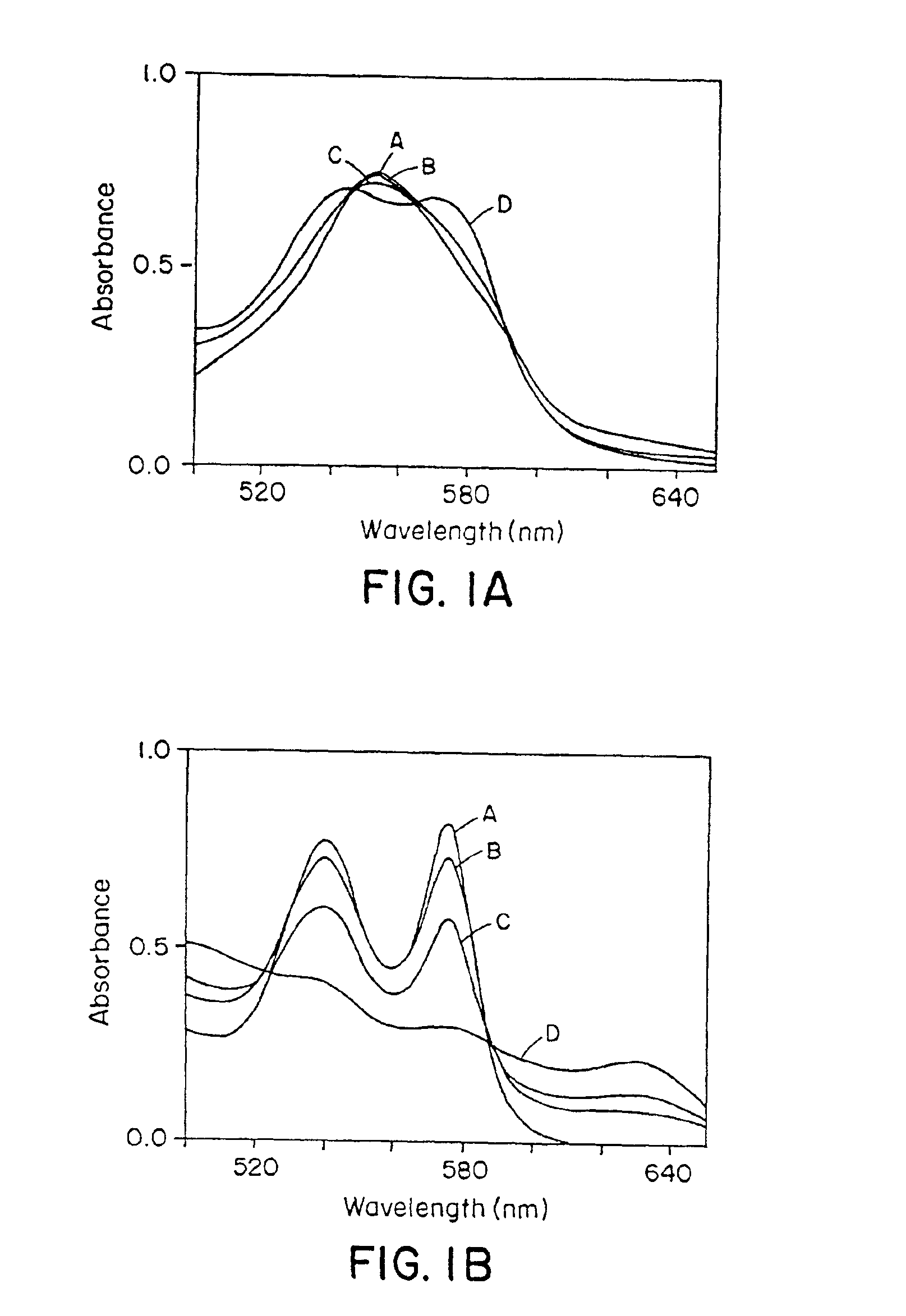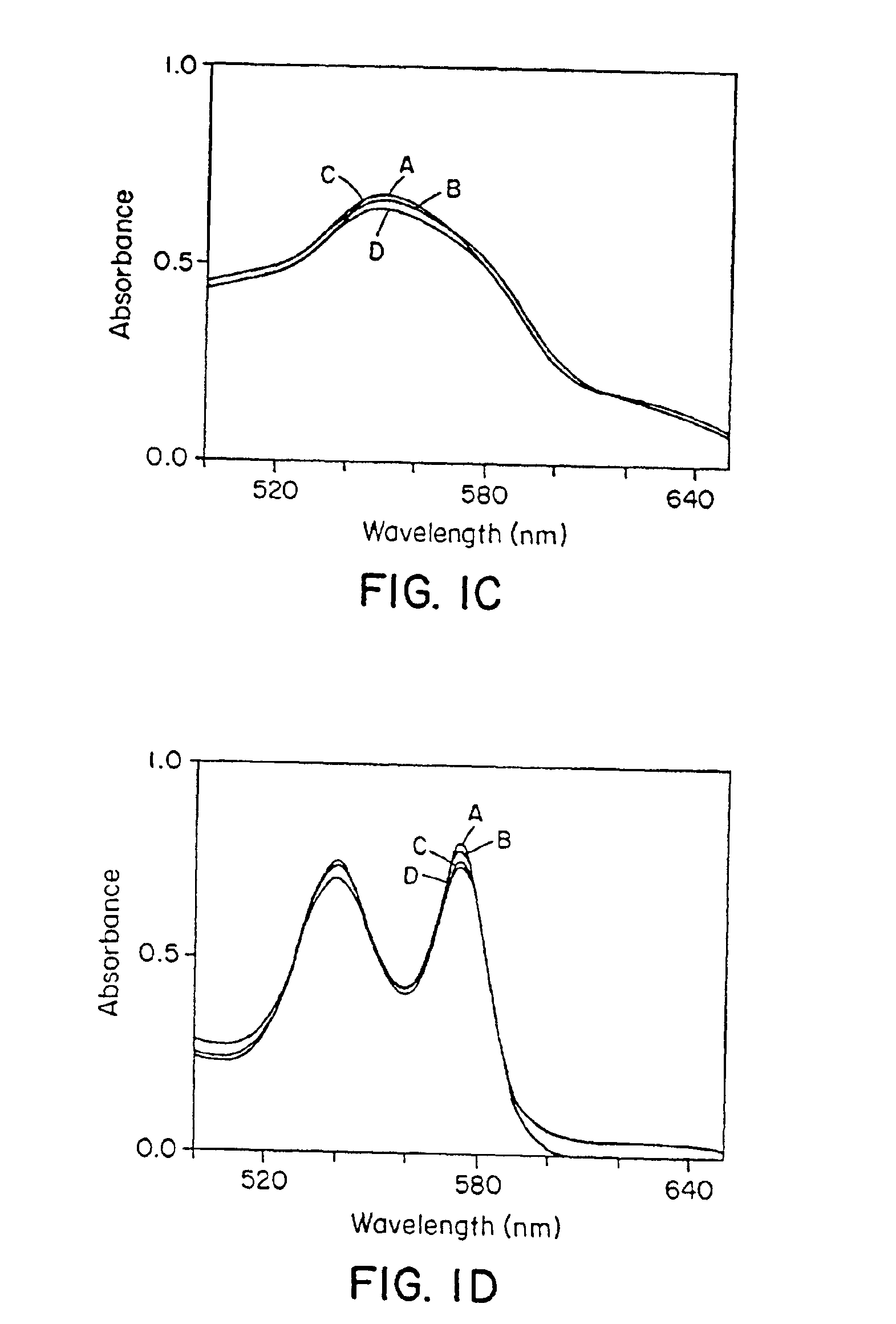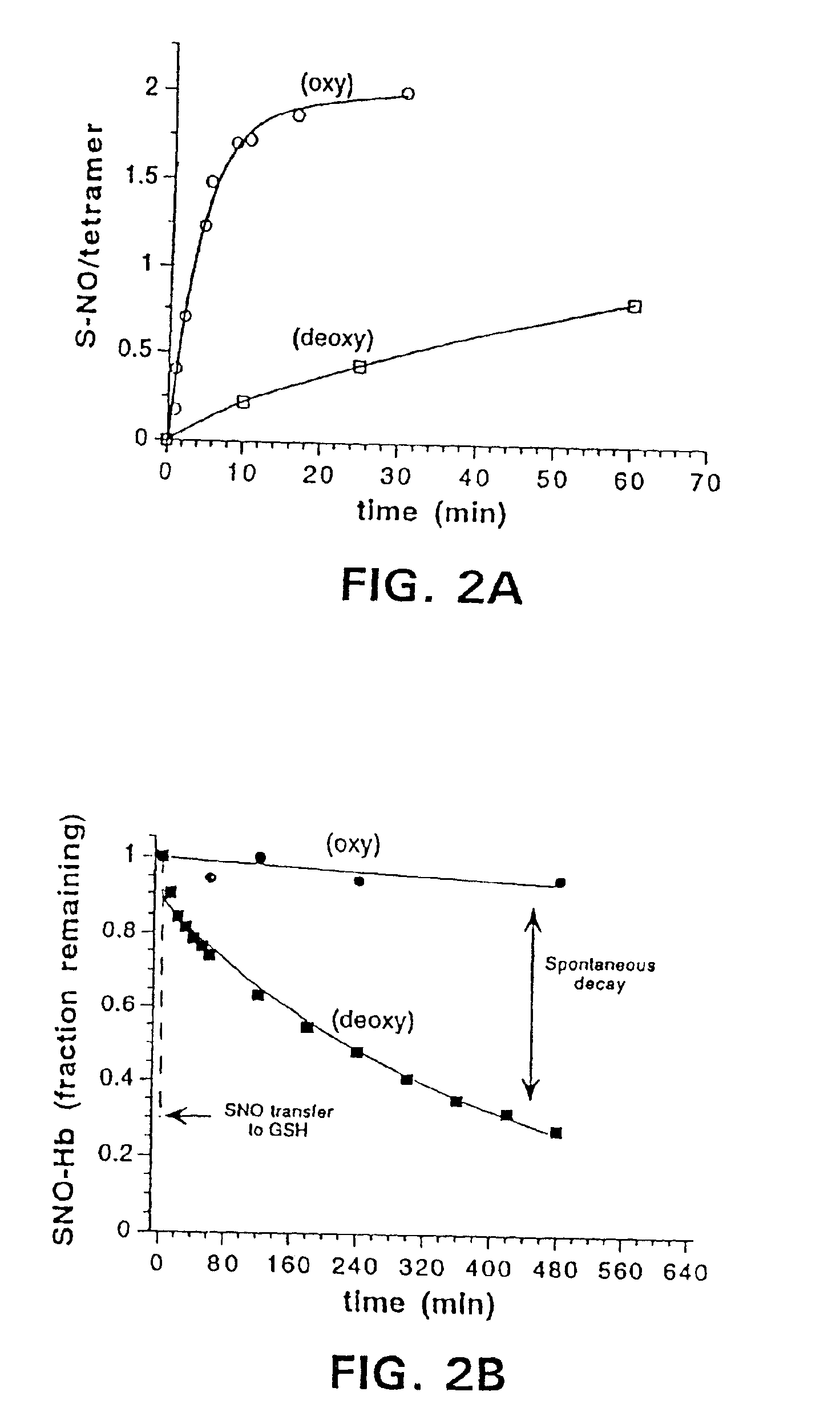Red blood cells loaded with S-nitrosothiol and uses therefor
- Summary
- Abstract
- Description
- Claims
- Application Information
AI Technical Summary
Benefits of technology
Problems solved by technology
Method used
Image
Examples
example 1
Interactions of NO and RSNO with Hb
[0112]It was observed that naturally occurring N-oxides, such as NO and RSNOs (Gaston, B., et al. (1993; Scharfstein, J. S., et al., J. Clin. Invest. 94:1432-1439 (1994); Clancy, R. M., et al., Proc. Natl. Acad. Sci. USA 91:3680-3684 (1994)), differed markedly in their reactions with Hb. NO bound very rapidly to deoxyHb (Hb[FeII]), forming relatively stable Hb[FeII]NO complexes (FIG. 1A), and converted oxyHb (Hb[FeII]O2) to methemoglobin (Hb[FeIII]) and nitrate (FIG. 1B), confirming previous reports (Olson, J. S., Methods in Enzymol. 76:631-651 (1981); Toothill, C., Brit. J. Anaesthy., 39:405-412 (1967)). In contrast, RSNOs were found to participate in transnitrosation reactions with sulfhydryl groups of Hb, forming S-nitrosohemoglobin (SNO-Hb), and did not react with the heme centers of either deoxyHb or Hb(FeII)O2 (FIGS. 1C and 1D).
A. Interaction of NO with deoxyHb
[0113]Conversion of deoxyHb (Hb[FeII]) to Hb(FeII)NO is observed upon incubation of...
example 2
Allosteric Function of O2 in Regulation of Hb S-nitrosylation
[0118]Oxygenation of Hb is associated with conformational changes that increase the reactivity of cysβ93 to alkylating reagents (Garel, C., et al., J. Biochem., 123:513-519 (1982); Jocelyn, P. C., Biochemistry of the SH Group, Academic Press, London, p. 243 (1972); Craescu, C. T., et al., J. Biol. Chem., 261:14710-14716 (1986)). The physiological importance of this effect has not been explained previously. We observed that rates of S-nitrosylation of Hb were markedly dependent on conformational state. In the the oxy conformation (R state), S-nitrosylation was more rapid than in the deoxy conformation (T state) (FIG. 2A). The rate of S-nitrosylation was accelerated in both conformations by alkaline conditions (i.e., rate at pH 9.2>pH 7.4), which would tend to expose the cysβ93 that is otherwise screened from reaction by the C-terminal histidine 146β. The salt bridge (asp β94—his β146) tying down the histidine residue is loo...
example 3
NO-related Interactions with Cysteine Residues of Hb in Physiological Systems
[0123]Given that Hb is largely contained within red blood cells, potential mechanisms by which S-nitrosylation of intracellular protein might occur were explored. Incubation of oxygenated rat red blood cells with S-nitrosocysteine resulted in very rapid formation of intracellular SNO-Hb(FeII)O2 (FIG. 3A). Rapid oxidation of Hb was not observed under these conditions. Intraerythrocytic SNO-Hb also formed when red blood cells were treated with S-nitrosohomocysteine or S-nitrosocysteinylglycine, but not with S-nitrosoglutathione (GSNO). Thus, erythrocyte access of RSNOs is thiol group specific. Exposure of oxygenated red blood cells to NO resulted primarily in metHb formation.
Endothelium-derived Relaxing Factor (EDRF) and Hemoglobin
[0124]Hb-mediated inhibition of endothelium-dependent relaxations is commonly used as a marker of NO responses. Inasmuch as reactions with either metal or thiol centers of Hb should...
PUM
 Login to View More
Login to View More Abstract
Description
Claims
Application Information
 Login to View More
Login to View More - R&D
- Intellectual Property
- Life Sciences
- Materials
- Tech Scout
- Unparalleled Data Quality
- Higher Quality Content
- 60% Fewer Hallucinations
Browse by: Latest US Patents, China's latest patents, Technical Efficacy Thesaurus, Application Domain, Technology Topic, Popular Technical Reports.
© 2025 PatSnap. All rights reserved.Legal|Privacy policy|Modern Slavery Act Transparency Statement|Sitemap|About US| Contact US: help@patsnap.com



